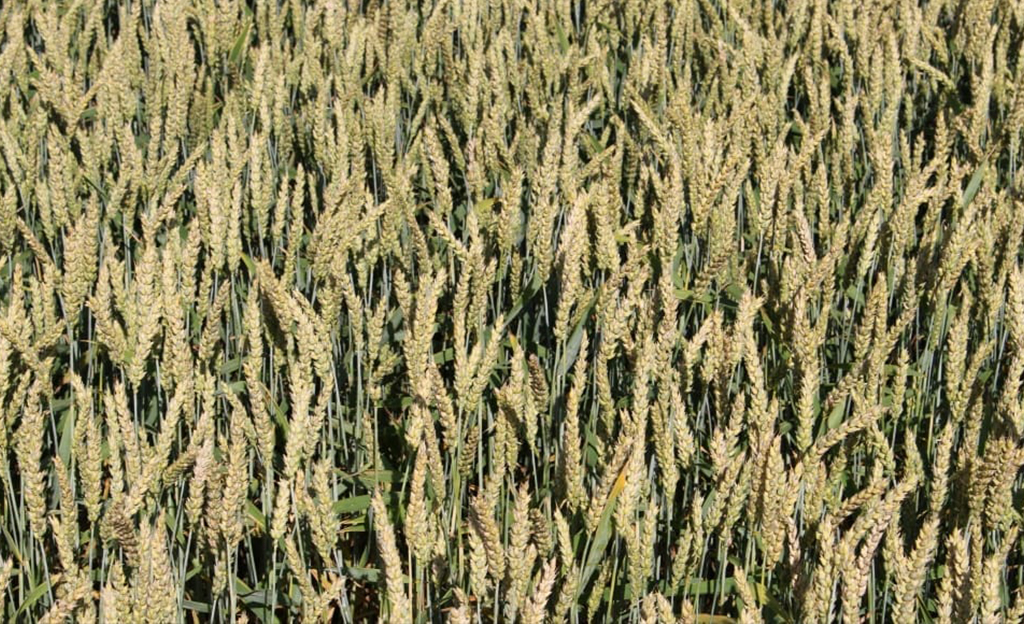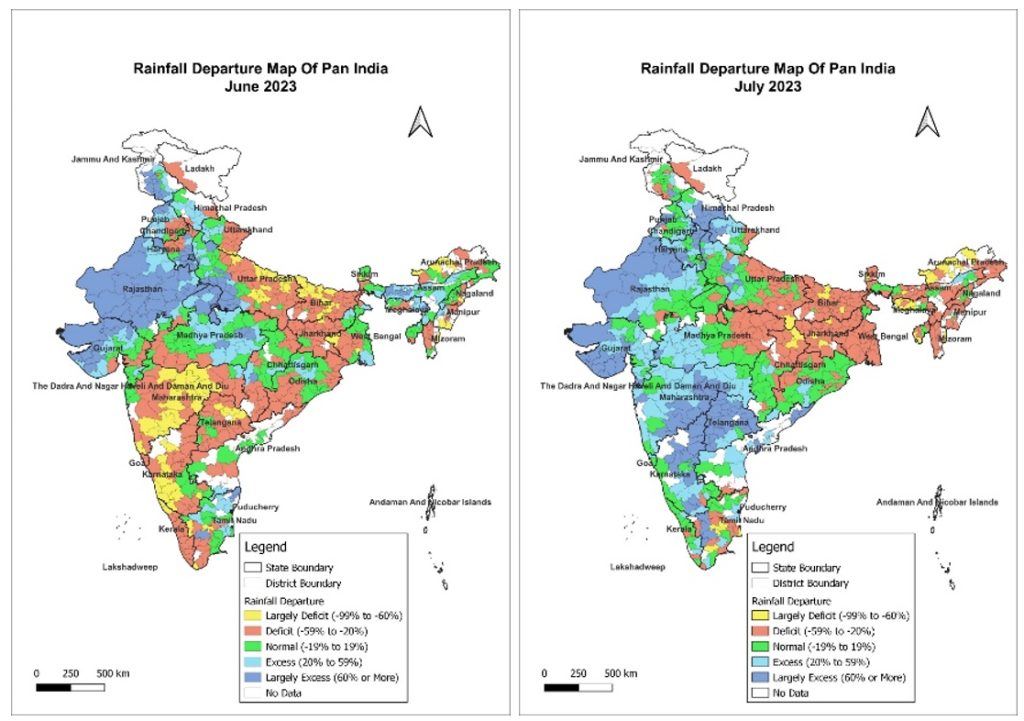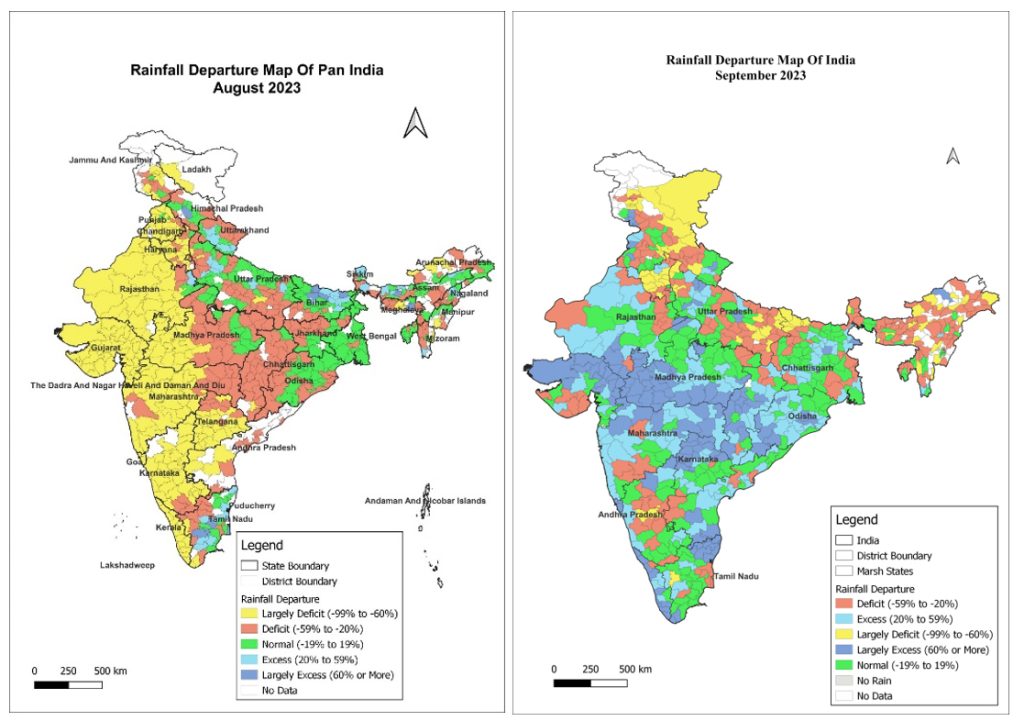Battling Erratic Rainfall to Safeguard Rabi Crops

The southwest monsoon season ended with rains that were ‘below normal,’ the first in four years. India saw a rainfall deficit of six percent in monsoon 2023 of the long-period average of 50 years. This, however, doesn’t clearly capture the erratic nature of its progression and distribution over India. Six states — Assam, Manipur, Mizoram, Jharkhand, Bihar, and Kerala — recorded major deficits. Source DTE
During the Kharif 2023 season, the monsoon has been erratic, arriving late by a week in June in India, which recorded a 10.1% rainfall deficiency. However, 12.6% above-normal rain in July helped sow most kharif crops. But what followed was the driest August month across India since 1901. With an all-India 36.2% deficit, vis-à-vis the historical average monthly precipitation, the sown crops experienced severe moisture stress.
July-August is usually the peak monsoon rainfall month in India, which helps meet the kharif crop’s requirements, fill up ponds and reservoirs, and recharge groundwater tables. This time, it was the other way round: Farmers had to rely on dam releases by irrigation departments and draw down underground water reserves to salvage their crops.
Erratic rainfall has become a formidable foe for Indian farmers, threatening the rabi crops. With roots grounded in climate change, deforestation, and urbanization, this issue demands immediate attention. The consequences of erratic rainfall on rabi crops are going to be devastating as it is directly related to deficit crops.


The Impact of Erratic Rainfall on Rabi Crops:
Despite the driest August, India dodged a drought this year due to unexpectedly heavy rains in September, with 13% more rainfall than usual.
From June 1 to September 30, India received a cumulative rainfall of about 821 mm, compared to a normal of 869 mm. This amounts to 94 percent of the Long Period Average (LPA). The monsoon 2023 was thus classified as ‘below normal’ rains, the first in four years. Although, due to the erratic nature of the rainfall, it’s an improvement from the worst.
Due to surplus rainfall in September, apart from being a life-saver for the parched crops, raised the total reservoir water levels as well, which are still below 10-15% from the previous year. This might be felt in the upcoming rabi (winter-spring) season, during which crops like wheat, mustard, chana, potato, onion, garlic, and jeera (cumin) – rely on water from underground aquifers and dams. The monsoon rain hasn’t been enough to fill reservoirs or replenish groundwater tables.
On top of that is El Niño. The US National Oceanic and Atmospheric Administration has predicted a 73% chance of average sea surface temperatures in the east-central equatorial Pacific Ocean ruling more than 1.5 degrees Celsius above normal during October-December and a 78% probability of exceeding 1 degree in January-March 2024. That’s well above the 0.5 degrees El Niño threshold.
The likelihood of El Niño persisting through the early months of 2024 could lead to below-average rain during the northeast monsoon (October-December) and winter (January-February) seasons. For farmers with already depleted ponds and groundwater reserves, it might make cultivating rabi crops grimmer.
Erratic Rainfall will –
- Reduce crop yields: Insufficient rainfall disrupts the growth process of rabi crops, leading to reduced yields. This directly impacts the livelihoods of farmers and the availability of food for millions.
- Increase costs of production: Farmers are compelled to invest more in irrigation and pest control measures during periods of erratic rainfall, driving up costs. This strains their financial resources and stability.
- Enhance risk of crop failure: Erratic rainfall amplifies the risk of crop failure, especially for rabi crops. This vulnerability contributes to food insecurity and jeopardizes the economic well-being of farmers.
The erratic rainfall brings uncertainty in crop yield and production, and it is quite challenging to accurately forecast crop yield at the right time for the timely placement of stocks. With RMSI Cropalytics Crop Outlook, you can access the latest crop yield and production forecast early to plan stocks at the right location.
This Crop Outlook provides accurate predictions for crop performance to help make data-driven decisions. The tool tailors district-wise forecasting based on local factors and crop stages. You can optimize your crops with easy access to reports and actionable insights.
Highlights of Crop Outlook
Monsoon impact on the crop in different states | Estimated crop yield | Crop production outlook | Overall crop outlook for the Kharif season | Updated PAN India Level Crop Map
A collective effort, bolstered by governments and private cooperation, is the key to navigating the challenges posed by climate change and ensuring food security for all. It will allow farmers to fortify their rabi crops against the onslaught of erratic rainfall, shielding their livelihoods. Together, let us weather the storm and secure a bright future for agriculture.

You must be logged in to post a comment.